Marketing Strategy: What It Is and How to Create One in 2026
Effective marketing isn’t optional—it’s essential for your business to thrive. Without a clear strategy, you’re just throwing content out into the void and hoping something sticks. Even the smallest companies need a well-thought-out marketing plan to stay focused, build momentum, and actually reach the right audience.
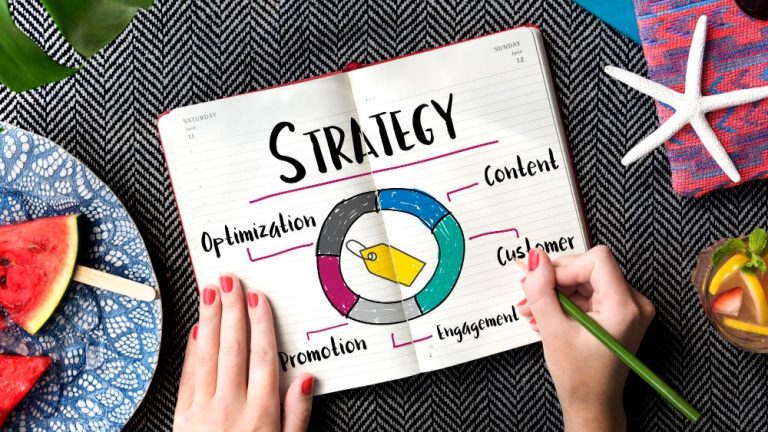
You need to coordinate your ads, online flipbooks, and social media presence to promote your company effectively. This article will help with that. We'll explain what a marketing strategy is, how to create one, and how it's different from a marketing plan. You'll also see examples of successful marketing strategies and learn how to introduce these elements in your workplace.
What is a marketing strategy?
A marketing strategy is a comprehensive plan for conducting marketing, which means promoting your products and services and explaining why customers should choose your company.
It includes the marketing goals the company wants to achieve, a description of its target customers, competitors, and unique advantages. This strategy helps guide all marketing activities and allows employees to plan ahead for the long term.
Key Points
-
A marketing strategy is a comprehensive plan for coordinating all marketing activities.
-
It includes Product, Price, Place, Promotion, specific marketing goals, competitor analysis, and metrics related to the target audience.
-
Types of marketing strategies include content marketing, SEO, paid online media, digital marketing, product marketing, email marketing, social media marketing, and partnerships.
Key elements of a marketing strategy
Marketing mix
Your marketing strategy must include an accurate description of your products or services - known as 4 Ps of marketing. We'll cover them shortly, along with the more detailed 7 Ps. In brief, they are:
-
Product: What you are selling, i.e. your good or service.
-
Price: How much your product or service costs.
-
Place: Where we sell your product or service (stores, internet, etc.).
-
Promotion: How you let people know about your product or service (advertising, promotions, etc.).
Marketing goals
A good strategy requires specific goals - things you want to achieve through marketing (e.g., increase sales by 20%). These goals should be precise and developed using, for example, the SMART model.
When describing your goals, you also need to consider how you're going to fulfill them. Determine your marketing budget and how much you can spend on marketing activities.
Also, think about human and technical resources. For instance, do you have access to cameras or music? If so, you could create online videos yourself and reduce costs.
Competitor analysis
Your marketing strategy should compare your company to competitors in your field. The analysis should include interesting strategies used by competitors and how you can improve upon them.
Consider what you offer and how you can differentiate—for example, if your competitors provide services and delivery, perhaps you can add something extra.
Segmentation, targeting and positioning (STP)
-
Identify your target audience:These are the people most interested in your product.
-
Target specific segments: Focus on these selected individuals. For example, typically, men aged 20-25 are interested in sports and technology.
-
Brand positioning: You want your brand to be associated with something specific (e.g., "we're the best in the market", "we offer the cheapest deals", or "we provide unique products"). By combining your target audience and positioning, you can already form a general picture of the marketing strategies you can adopt!
Metrics and key performance indicators (KPIs)
Your marketing strategy should include hard data. At a minimum, calculate the following metrics:
-
Customer Acquisition Cost (CAC): The cost to acquire one customer.
-
Organic traffic:The number of people who visit your site naturally, without paid promotions, typically by searching for content or coming through external links.
-
Conversion rate: The percentage of visitors who make a purchase, relative to the total number of visitors.
-
Marketing qualified leads (MQL): The number of people interested in your product who are likely to become customers.
The 7 Ps in a marketing strategy
In your marketing strategy, you need to describe your offer in detail so that you know what to promote. Based on this information, you can refine your marketing tactics even further.
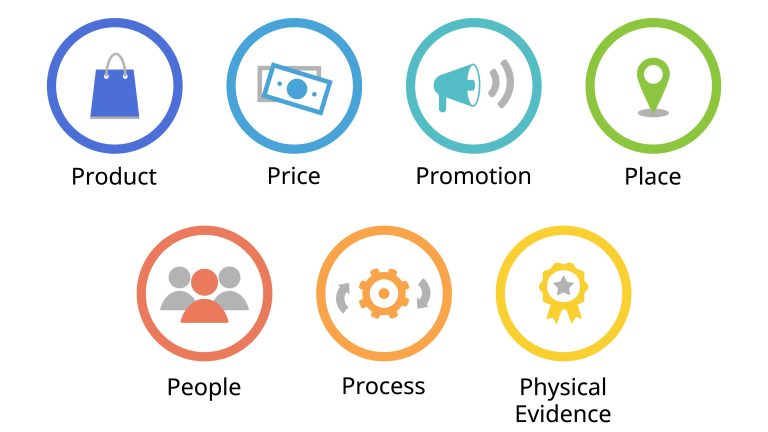
2. Product
Marketing should focus on products or services that people want to buy—there's no point in promoting something that no one wants. Marketing strategy involves showing the value of your product to the customer - in short, what the customer will get after buying your product.
You have to provide customers with what they need, not what you think they want. Therefore, a key part of the strategy should be understanding the customer’s needs and making adjustments accordingly.
3. Place
Your products should be sold in the right place, at the right time, and in the right quantity. Consider storage, inventory, and distribution costs. For example, a large company selling energy drinks might offer free samples at music festivals to promote itself.
In this step, also think about distribution channels and display methods. Today, most advertising budget is spent digitally, so consider where your ads will be displayed - whether on Pinterest, TikTok, or other platforms.
4. Promotion
Decide which channels you will use to reach customers (advertising, PR, social media, etc.). You need to grab the customer's attention by showing why your product is interesting and why they should buy it.
Focus on customer benefits, not just features - how you will reach them and how you will communicate your information. Make sure the message is consistent across all platforms.
5. People
Your employees are also critical to your marketing - it's not just salespeople who impact on customer satisfaction. In the age of social media, every employee can influence your marketing efforts!
Motivated employees across all departments contribute to the smooth operation of your brand, especially when it comes to after-sales support and customer service.
6. Process
The product is just one part of the purchase. Today's customers expect a better experience and easier ways to buy and receive products. Your strategy should also involve product/service delivery systems, such as your website interface, delivery methods, or mobile app.
When developing your strategy, focus on the entire customer experience, from discovery to purchase and beyond. Ensure that all touchpoints are easy and convenient for customers.
7. Physical evidence
Show customers what they're buying. Online, provide high-quality photos and videos. Use testimonials, reviews, and other forms of social proof to build trust. One way to present your products is through Publuu's online catalogs or product listings.
Publuu’s online catalog example
View more online flipbook examples
MAKE YOUR OWN
These multimedia flipbooks not only work like physical catalogs with realistic page-flipping effect, but also allow you to present the appearance of your products to your target audience. Potential customers learn more about your offer and visit your social media platforms to see how your products work for others.
Types of marketing strategies
In the modern world, there are many ways to create a successful marketing strategy for your business. Here are some examples:
-
Content marketing: Create useful and interesting content, such as blog posts or videos, to attract and retain customers. For example, a catering company's website might feature recipes, cooking tips, or healthy living advice in addition to product descriptions or a price list.
-
SEO (Search Engine Optimization): SEO helps people find your site on search engines like Google. This involves using the right keywords and adopting a user-friendly site design.
-
Paid online media content: Paying to advertise your business, such as buying ads on social media or Google.
-
Digital marketing: Using online tools like email and social media to reach customers. You can use newsletters or digital brochures from Publuu.
-
Product marketing: This involves direct marketing of products and messages, such as author meet-and-greets during a book tour to promote a new book.
💡Want to know more? Check out our book marketing strategies!
-
Email marketing: Sending emails to customers with news, offers or updates. Many marketing strategies can incorporate flipbook newsletter created using Publuu - integrating the best elements
-
Social media marketing: Using platforms such as Facebook, Instagram or TikTok to connect with customers. Visit our guide for more tips.
-
Partnerships: Working with other businesses to reach new customers. For example, a coffee shop can partner with a bakery to sell muffins and promote both businesses.
It's best to combine these methods and coordinate them using appropriate content marketing tools.
For example, your marketing efforts should use a consistent style and color scheme to help people recognize and trust your brand. The keywords you use on your website should also match the ones you use on social media to create a unified message.
Marketing strategy vs. Marketing plan
Many people don't know the difference between a marketing strategy and a marketing plan. Simply put, a marketing plan is based on a more general, predefined strategy. The plan shows what the company will do to promote itself over a set period and includes key information about current and future marketing activities.
A company may have different marketing plans for different products or services, or even for the same product or service but implemented at different times or on different platforms. For example, if you offer graphic design software, you might showcase its capabilities on YouTube for professionals and its user-friendliness on TikTok for casual users.
Marketing strategies guide a company's marketing efforts over time. They contain key elements of marketing, while plans contain detailed information about a specific campaign.
For example, your company may adopt a strategy to increase popularity with new groups. In the plan, you would include specific activities, such as advertising in media used by women aged 30+.
How to create a marketing strategy
1. Set your goals
First, determine what you want to achieve. In many companies, the goal of marketing is simply to increase sales. However, you can set smaller goals, such as:
-
Promoting yourself as an expert in your field
-
Getting people to talk about your company
-
Finding new customers
2. Get to know your customers
Marketing is about connecting your product with the people who would buy it. You need to understand who these people are and do the market research.
-
What type of person would buy your product?
-
What does your target audience want or need?
-
What is stopping them from buying?
-
What do other companies offer?
-
Where do they spend their time online or offline?
For example, if you sell board games, you may want to reach families. You know that you can display your ads during children's programs or on parenting sites. Direct contact with your customers is one of the major benefits of social media marketing.

3. Create a strong message
Once you know what your goals are and who you're talking to, you need to create a message. Your customers have a problem, and your product or service is the solution.
Explain how your product helps solve the problem and why it is better than your competition. Use storytelling - people often respond well when they identify with the hero of the story.
4. Determine your budget
How you share your marketing message depends on how much money you have. You can buy ads, work with influencers, or try to get people to share your posts online. Check not only your bank account but also the capabilities of your company and team.
5. Choose the right places
Even the best message won't work if you share it in the wrong place. Think about where your customers are and what they like. For example, your board games could be promoted through blog posts, YouTube video ads, paid social media content, or in real life at family gatherings or board game conventions.
6. Track your results
To improve your marketing, you need to know if it's working. Identify key factors and how you will measure them. For example, you can track how many people visit your site or how many sales you make. Use the data to update your marketing objectives.
With Publuu's document tracking, you can also see how readers interact with your content, helping you understand your customer behavior. Use this information to adjust your marketing goals.
Why marketing strategy is important
Without a well-prepared marketing strategy, marketing efforts are often conducted in the dark. Uncoordinated marketing is a waste of money, time, and resources.
An effective marketing strategy reaches a targeted audience, builds relationships, and turns potential customers into brand ambassadors:
-
Provides clear direction: A single, well-thought-out strategy creates a simple path for the entire company and brand.
-
Target the right people: You need to define the target audience, create detailed customer profiles, and understand their needs.
-
Builds brand identity: A marketing strategy helps create a consistent, recognizable brand image, both visually and in communication.
-
Optimize spending: Optimization involves finding the most effective channels and activities, maximizing your return on investment.
-
Performance measurement: Marketing strategies define key metrics and performance indicators, making it easier for companies to measure and optimize future campaigns.
Examples of marketing strategies
Graubünden Tourism

Graubünden is one of the most beautiful regions in the Swiss mountains, but this tourist office adds even more magic to the place. With great photos and videos, they show how amazing it is to spend time in this region.
Graubünden Tourism uses both traditional and modern ways to reach as many people as possible. They use digital platforms such as social media, email newsletters, and their website.
They not only promote well-known attractions but also explore less popular places, creating unique stories about the region. This approach makes people want to visit Graubünden and feel connected to it.
Cupsly

Cupsly is a manufacturer of high-end coffee and tea cups. But how do they achieve this?
The creators use LinkedIn as their primary platform, aiming to target professionals and build an online presence for their product. They focus on storytelling and sharing their startup journey with business-oriented readers.
Cupsly also uses high-quality brand visuals and personal narratives. Through beautiful photos and candid posts, they build trust with customers and show that there are real people behind the brand.
Red Bull

This well-known energy drink brand does more than just traditional advertising. It sponsors prestigious events (such as the Red Bull Stratos project) with a focus on extreme sports. Red Bull is creating a community of people who love adrenaline.
RedBull's marketing strategy is a combination of traditional media, content, influencers and event marketing. The brand collaborates with extreme sports athletes and sponsors global events, each event has an online presence in a specific community.
Taco Bell
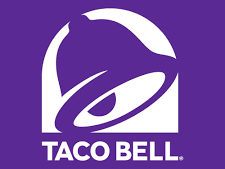
This is a well-known fast food chain that decided to reinvent itself. Today it is targeting the millennial generation and focusing on social media.
This strategy allows Taco Bell to create a brand personality that resonates with their audience. They often collaborate with other companies associated with Generation Y to develop unique and innovative products (e.g. the Doritos Locos taco).
Spotify

It's hard to find a music lover today who hasn't heard of Spotify. They've made a name for themselves because their key strategy is to customize the user experience.
Spotify uses artificial intelligence to understand users' listening habits. Smart playlists, filters, and mood-matching music make each user feel unique. Personalization is a key element of Spotify’s marketing strategy and their sustainable competitive advantage.
Nike
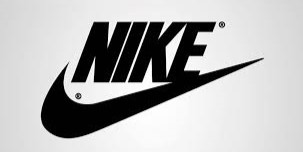
Nike is a brand that has always focused on its customers. Today, with platforms like “Nike By You,” customers can design their own shoes or clothes, giving them a sense of uniqueness and making them feel like part of the brand.
Nike's marketing strategy makes customers to drive its campaigns, providing them with additional personalized experiences.
Apple
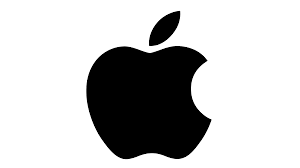
Apple is a symbol of success in the highly competitive IT industry. It creates a strong brand identity around innovation and design, often appealing to artists. The brand relies heavily on word-of-mouth marketing - you’ll often hear that a Mac might be a good computer for you!
It uses sleek, minimalist product presentations and builds anticipation through carefully orchestrated product launches that are often spectacular. Another key element of their marketing strategy is the emphasis on an ecosystem of interconnected products and services, an area where only Google can compete with them.
Marketing strategy FAQs
Which is the best marketing strategy?
Finding the best marketing strategy isn't easy because every business is different, and there's no one-size-fits-all solution. However, most businesses in 2026 are focusing their efforts online. It's easier to find and track potential customers online, so your company's marketing strategy should focus on digital marketing channels.
Regardless of the strategy, building a strong relationship with your customers is key. Always make sure that their needs are being met and that your overall marketing strategy is aligned with both your partners and customers.
What are the 4 core marketing strategies?
While there are many different approaches to marketing, a common framework used to categorize them is the 4 Ps of Marketing. These are:
-
Product: This involves creating a product or service that meets the needs and desires of your target market.
-
Price: Determining the right price for your product or service, taking into account factors such as production costs, competition, and perceived value.
-
Place: Deciding how and where your product or service will be available to customers (distribution channels).
-
Promotion: Communicating the value of your product or service to your target audience and persuading them to buy.
Which type of marketing is most successful?
There's no single marketing strategy that dominates at all times, but these days online marketing is something that practically all companies deal with. It includes aspects like:
-
Content Marketing
-
Search Engine Optimization (SEO)
-
Social Media Marketing
-
Email Marketing: Building relationships with customers through personalized email campaigns.
Summary
We hope this guide has helped you understand key marketing strategies for 2026. You can now achieve your marketing goals, connect with your audience, and meet your business objectives.
The 4 Ps (Product, Price, Place, Promotion) or their expanded version, the 7 Ps, provide a solid framework for developing effective marketing strategies.
Digital marketing is the dominant form of promotion, but the best marketing strategy is different for everyone. Our tips will help you create a strategy that works for you!